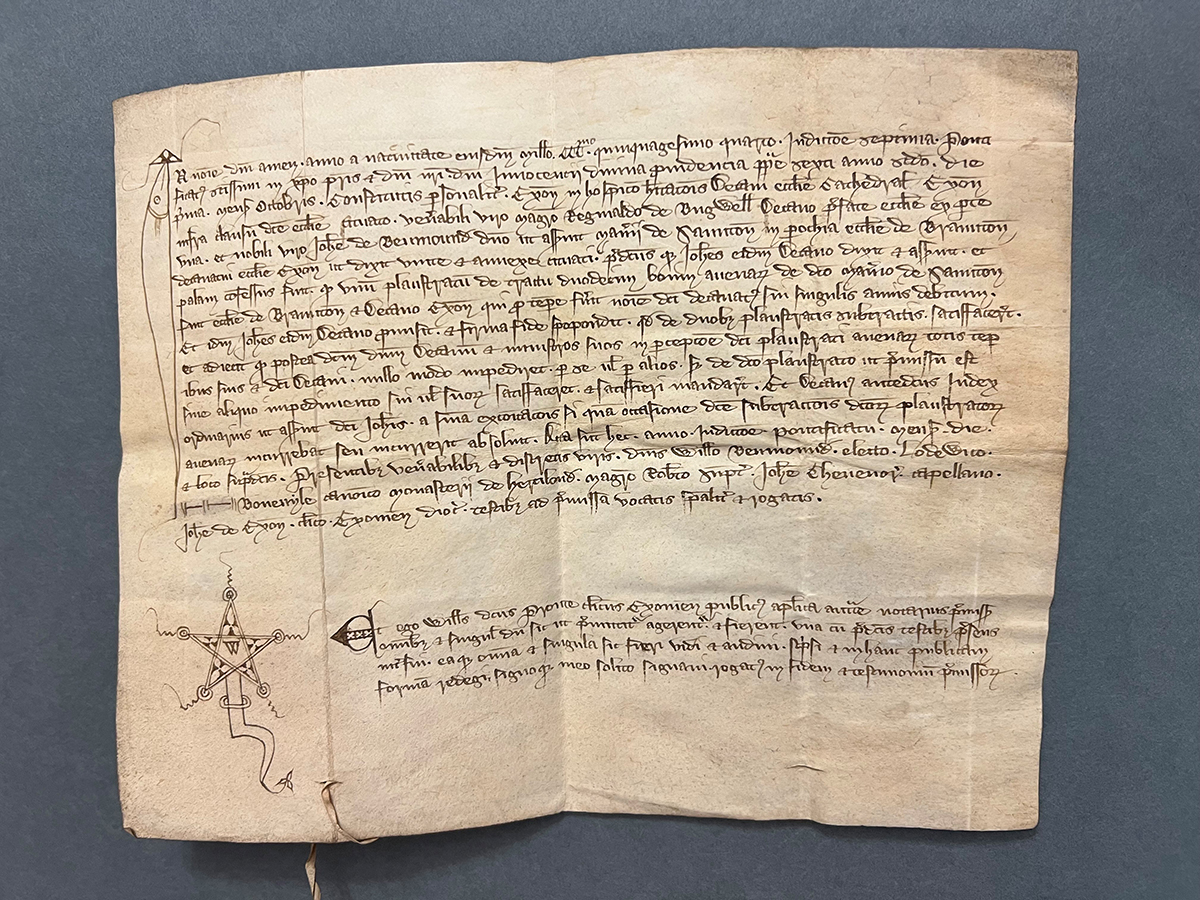 By Ellie Jones, Cathedral Archivist
By Ellie Jones, Cathedral Archivist
With thousands of documents to choose from, sometimes it can be difficult to decide which one to focus on for Cathedral Life. Then, occasionally, a document is requested by a researcher that has details we find so unexpectedly delightful that we can’t help but share it. This is a type of legal record called a notarial instrument. It records the appearance of John de Beumond, lord of the manor of Saunton, north Devon, before Reginald de Bugwell, Dean of Exeter, on 1 October 1354. An agreement is made that a cart-full of oats is owed to the dean from the manor. It is a routine sort of document, finely written, but William Proute – the notary public of the diocese of Exeter – has added a particularly endearing flourish in the form of an initial capital “I” shaped like a fish or eel. As notary, Proute would have been a lawyer appointed on papal authority by the Archbishop of Canterbury. His task was to authenticate legal documents, which is done partly by the use of the notarial sign at the bottom of the document. Each medieval notary had their own individual design, which served as a sort of seal and signature. They were hand drawn and deliberately elaborate to discourage forgery and to demonstrate good penmanship, but over the centuries they were eventually replaced by seals and signatures.